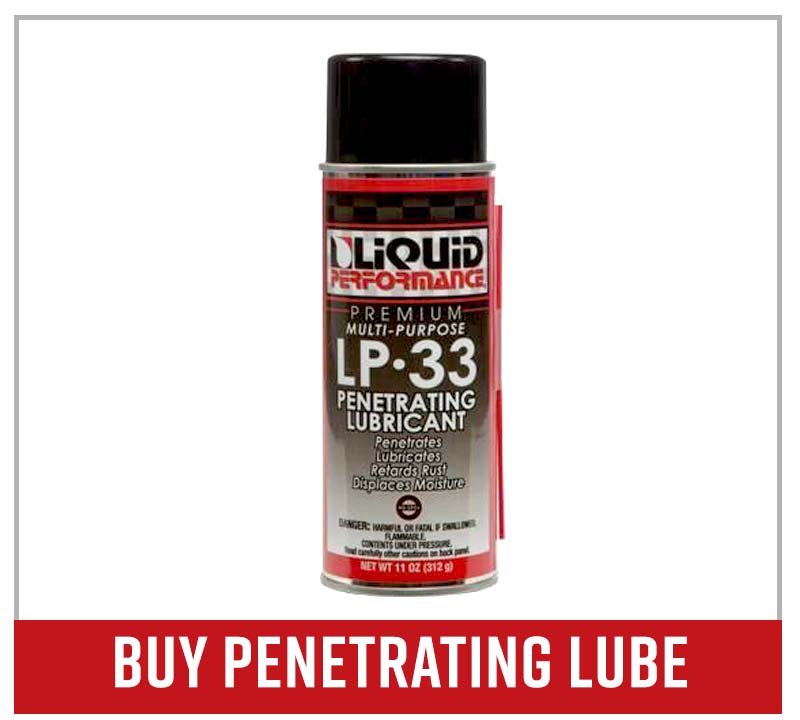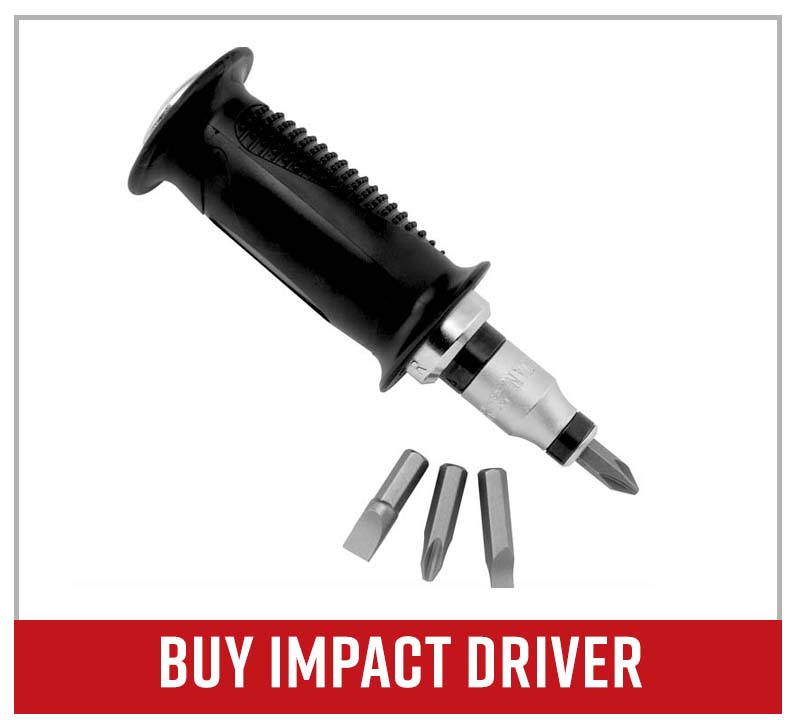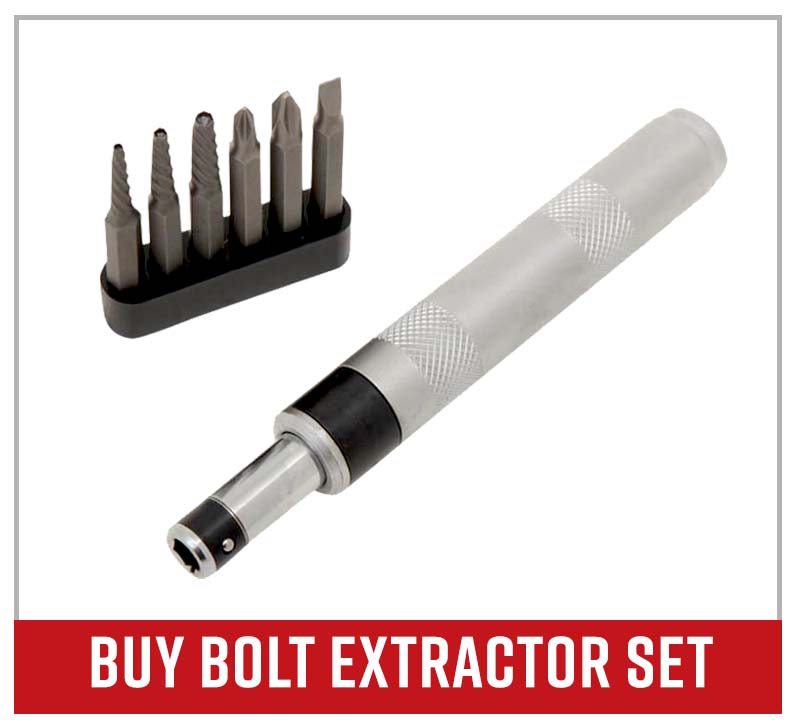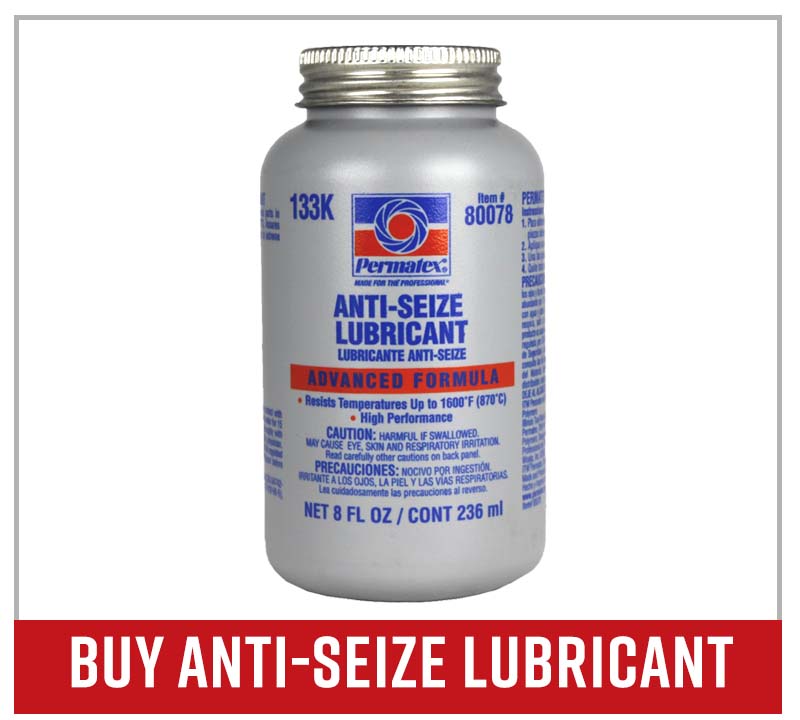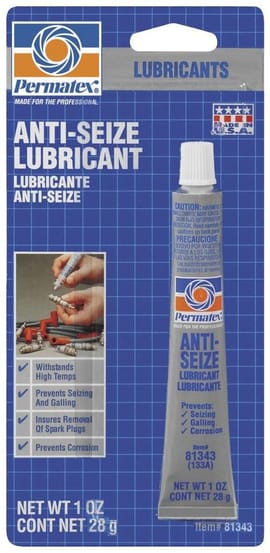How to Remove Seized, Damaged or Broken Bolts
Removing a seized, damaged or broken bolt requires one very important tool above all: patience. Trying to remove a seized, damage or broken bolt can be incredibly frustrating.
Look no further than the video above for proof! However, the following methods are recommended to have a much greater chance of successfully removing the offending fastener.
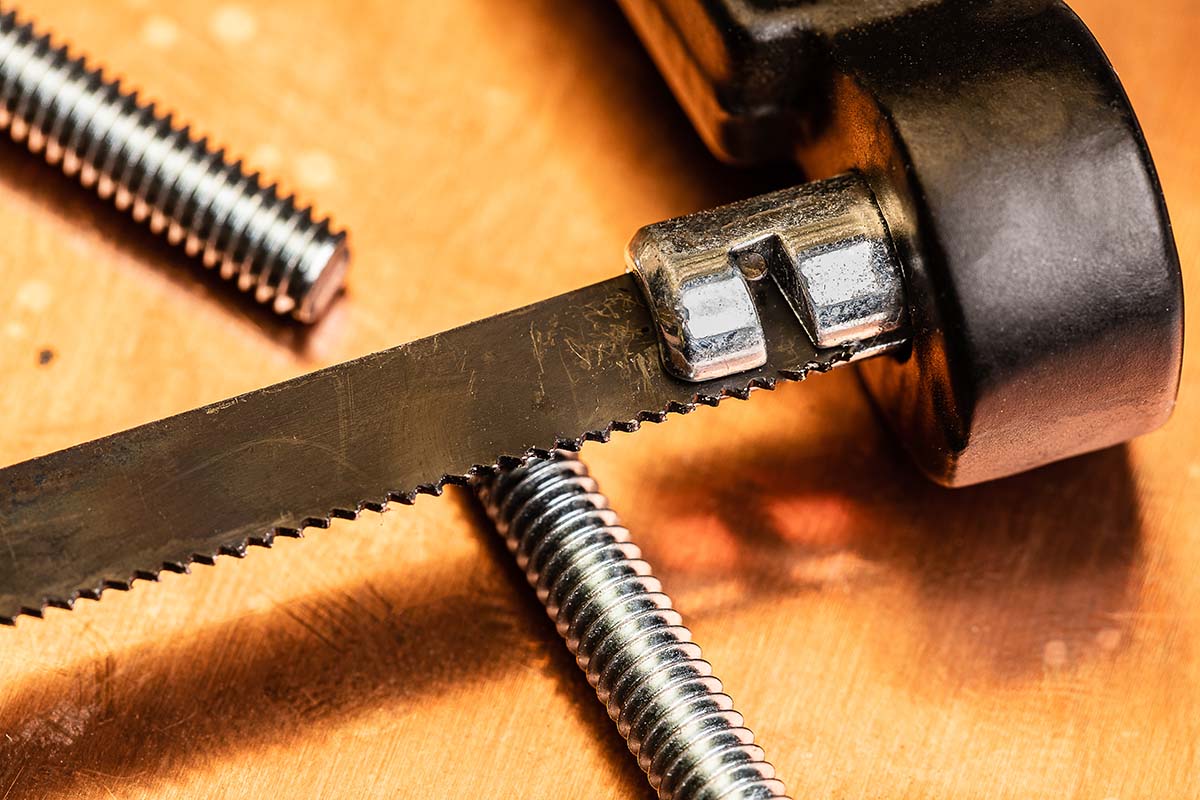
Prepping Seized Damaged or Broken Bolts
Cleaning the bolt. Clean off as much corrosion, dirt, oil and grease as possible. Use a wire brush and if necessary, a squirt of contact cleaner.
Penetrating oil/lube. Apply penetrating oil to the seized threads. Penetrating oil or lubricant acts as a mild solvent that breaks down some of the corrosion within the threads. It also wicks deep down into the threads, and acts as a lubricant to ease the removal of the nut. The longer you leave the penetrating oil in, the less chance there is of the nut head rounding or the thread shearing. Leave the penetrating lube in for at least a few hours, reapplying it as you wait.
Striking the bolt. Hit the bolt squarely on the head with a hammer to shock the threads and help break them free.
Removing Seized Bolts
Impact driver. An impact driver delivers a powerful and abrupt combination of forward shock and rotation to the bolt that can break the thread free.
6-point socket. Use a 6-point socket or wrench for contact with each side of the bolt head, not just the corners, so it applies more force to the thickest part of the bolt. There’s also less chance of the socket or wrench rounding the corners.
NOTE: Avoid using 12-point sockets and wrenches.
Socket seating. Make sure the socket or wrench is fully seated over the bolt to minimize any chance of the socket slipping off the bolt. This optimizes the turning force applied to the bolt head. Take it easy when loosening the bolt to avoid shearing the fastener. If you feel it’s going to shear, stop trying to loosen it. Instead, try tightening and loosening the bolt slightly, as working it back and forth can slowly break the thread free.
Heat. Use a butane torch to heat up the bolt, then cool it quickly with water and try removing it. As the bolt heats and cools, it expands and contracts, which can be enough to free seized threads.
NOTE: Never use a torch near flammable parts such as fuel lines or tanks, or plastic or rubber gaskets and bushings.
Breaker bar. For larger bolts where there’s less chance of shearing, use a breaker bar, which applies more torque on the bolt to break it free.
Impact wrench. An impact wrench provides a strong rotational force to the bolt, as well as a series of sharp jolts that help break it free. As with a breaker bar, an impact wrench is best used on larger bolts that are less likely to shear.
Bolt head grinding. If the bolt is attached to a nut at the other end and removing the bolt head will allow the remaining bolt shaft and nut to be removed, use an angle grinder to grind away the bolt head completely.
Removing Damaged Bolts
Groove cutting. Cut a groove across the top of the bolt with a hacksaw or Dremel. Use a screwdriver to remove the bolt.
NOTE: This method can work on bolts with stripped heads, but is unlikely to work on bolts that are also seized.
Cutting new edges. Use a hacksaw or small cutting tool to cut a flat edge on either side of the bolt head, then use an adjustable wrench to grip the bolt and turn it.
Welding on a nut. Weld a nut to the damaged bolt head. Allow the weld to cool, and use a socket to remove the nut/bolt head combination.
Removing Sheared Bolts
Bolt extractor. Drill a hole into the center of the bolt, then insert a bolt extractor. You might need to drill a couple of increasingly wide holes through the bolt for the extractor to fit. As you drive the bolt extractor into the hole, the extractor will rotate the bolt from within and slowly remove it.
Drilling. Drill a hole through the center of the bolt. Continue increasing the diameter of the hole until you have drilled out the seized threads of the bolt and its housing. Next, make a new thread within the housing using a thread tap tool. The drawback with this method is the new thread will have a wider diameter than the original thread. If you want the thread to remain the same diameter, consider using the following method:
Thread insert. A thread insert kit will include the exact-sized drill bits and thread tap tools you’ll need. Drill out the seized bolt and the threads of the housing. Tap the housing, then screw in the thread insert into the housing. Once installed, the insert will provide a thread that’s the same diameter as the others in the housing.
Preventing Bolts From Seizing or Breaking
A little maintenance should keep bolts in good condition and make them easy to remove when the need arises. Never overtighten bolts, and always torque them to the correct specification using a torque wrench. Apply anti-seize lubricant to bolt threads.
NOTE: Anti-seize lube is only recommended for certain types of bolts and fasteners. Consult your vehicle’s service manual to see whether using anti-seize lube on a particular bolt is advisable or not.
Finally, a coating of paint protects a bolt head from moisture and corrosion. The drawback is that the paint will have to be removed whenever the bolt needs removing.

